Solar Energy Solutions
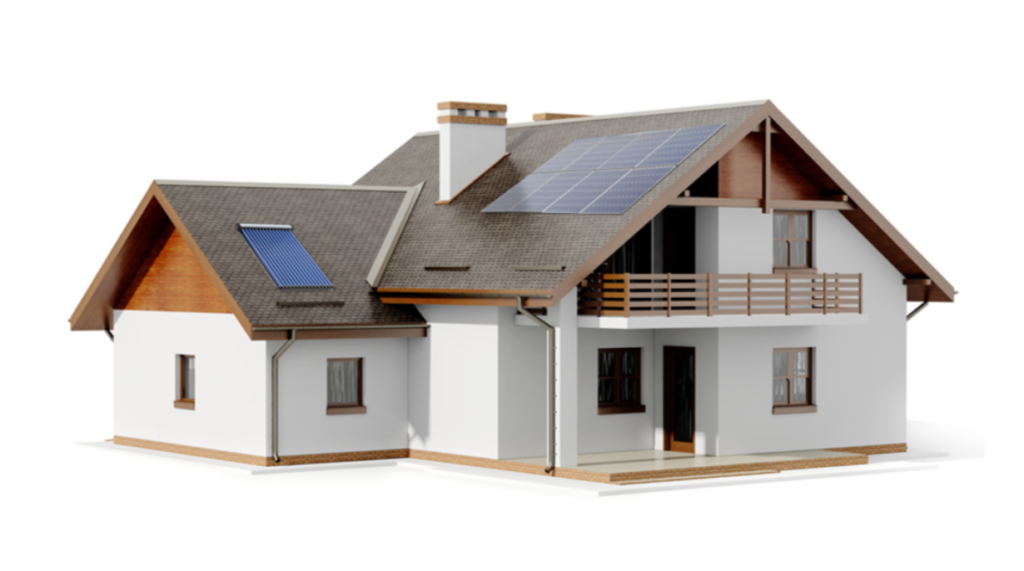
Why Solar & How it Works
Why Solar Electricity?
Many homeowners are installing solar power systems to reduce their reliance on Eskom, lower their electricity bills, and make their homes more environmentally friendly. Most electricity in a home is used in the early mornings and evenings and not during the day when solar power production is at its maximum. For this reason, we recommend using an off grid or hybrid system with lithium battery storage to store solar power generated during the day and make use of all this stored energy to power your household lighting and appliances at night.
How it works
Solar panels collect energy from the sun and convert it into electricity which is sent to the inverter. The inverter is one of the most important components of a solar power system and has two very important functions. It takes the electricity from the solar panels and charges the batteries as well as convert the DC from the batteries and solar panels into 230V AC. The AC electricity is then fed into your home to power your lighting and household appliances. There is no need to change any of your lighting or appliances.
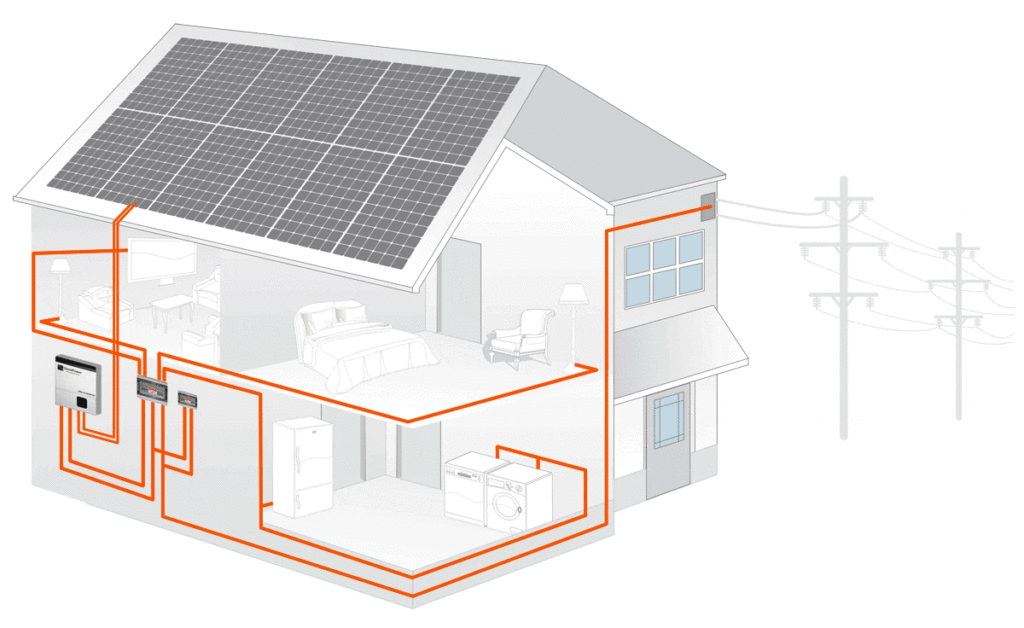
Any excess solar power that is not used during the day is used to charge your battery storage system. The battery storage system supplies power to your inverter at night or when there is insufficient solar power available to satisfy your power needs. The system uses an automatic change-over switch to ensure you still have power from Eskom on occasion when there is not enough solar and battery power available. This way you are almost certain to always have power available, day and night.
Different Types of PV SOLAR SYSTEMS
Different Types of PV SOLAR SYSTEMS
System 1 Grid Tie
No batteries, grid-connected.
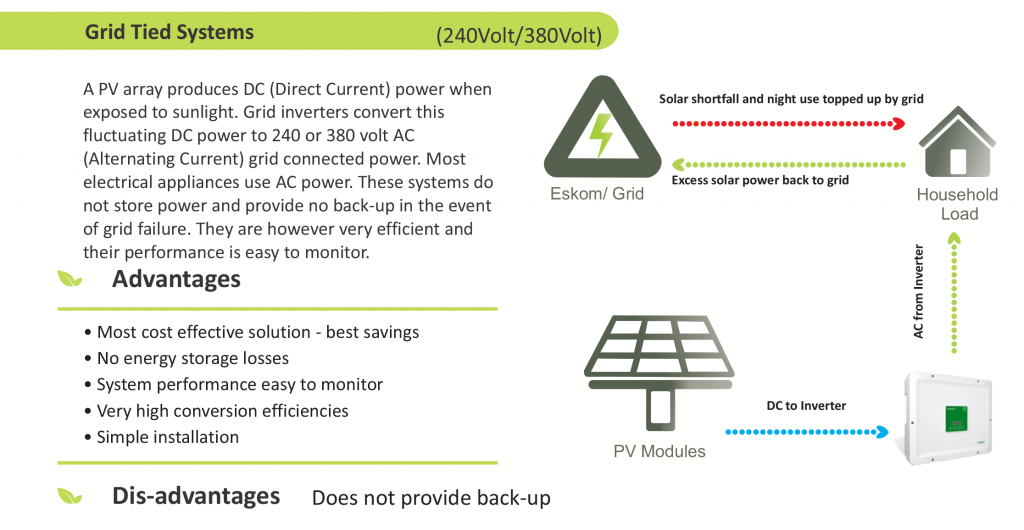
This system supplements your grid energy usage and is a very good option for reducing your electricity usage from the grid. In the event of a blackout or power outage, your solar system is forced to shut down. However, given that Eskom outages are not the issue, but cost savings are, this is a highly practical solution to dramatically reduce your electricity bill by producing all your daytime energy requirements, free from the sun, and avoiding the additional expense of a battery system.
A Grid tie system is highly cost-effective and has a much shorter payback period (ie: starts paying for itself from day 1).
System 2 Hybrid
Batteries and a grid connection

Is commonly referred to as a hybrid system and with the correct installation will act as a UPS (uninterrupted power supply) in the event of a power outage. The PV system will charge up the batteries first and then the excess production will supplement your household/ business energy needs. Many of our clients start with system 1 with a plan to build up to a system 2 and then add battery back-up at a later stage as their budget allows to build up to a system 2 configuration. The great benefit of solar PV is that it’s entirely scalable and you can add to it as your needs grow. Clients typically opt for this when power outages are an ongoing issue.
System 3 Off Grid ( Island Style )
Only batteries, no grid connection
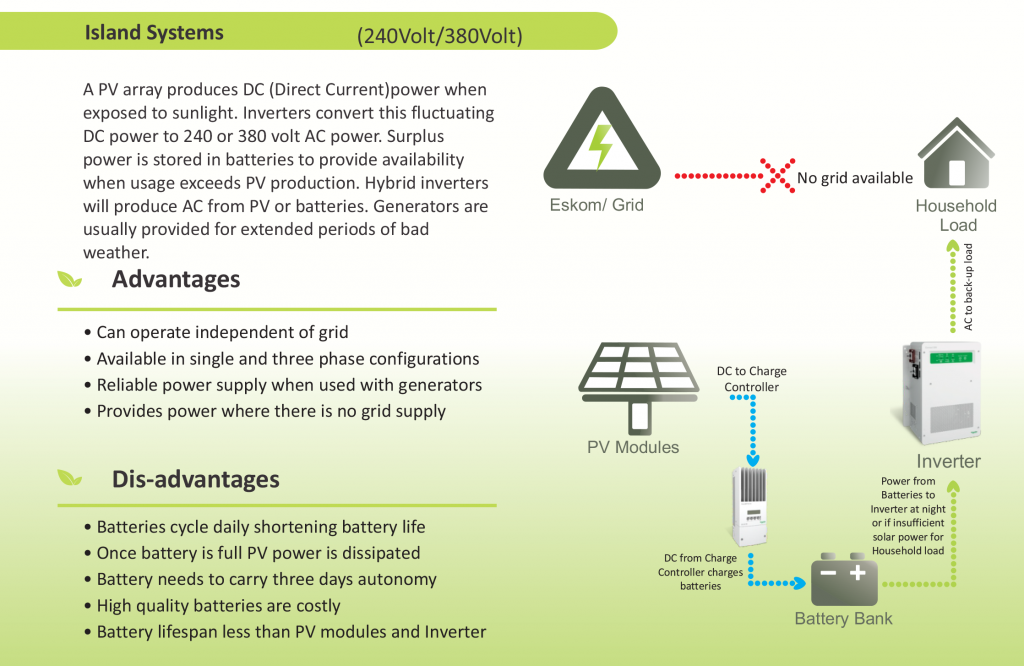
Is useful for areas where no grid exists, such as farms or remote areas. The energy produced will charge up the batteries which should allow for two to three days’ worth of energy needs and these batteries will feed the power requirements of the property.
Why do I need to implement energy efficiency measures beforehand?
Implementing energy efficiency measures before you buy your PV system will reduce your electricity use and allow you to buy a smaller and less expensive system. For example, converting geysers which are your biggest electricity users to solar or heat pumps, installing LED low energy lighting, using gas for cooking, installing lighting motion sensors and so on. If you’re designing a new building, consider working with the architect and builder to incorporate renewable energy solutions into your design from the outset. In fact, some measures are already legislated. SANS 10400-XA: Energy Usage in Buildings, and SANS 204: Energy Efficiency in buildings requires a focused solution for areas such as water heating, whereby 50% of all hot water in new buildings needs to be produced by methods other than electrical element heating.
Analysing your electricity needs – No shooting in the dark
Calculating your electricity needs is the first step towards getting PV ready. A thorough examination of your electricity needs helps you determine the following:
• The size and cost of the system you will need.
• Fluctuations in your energy usage during the day and night and over the months to manage peak demands.
• Energy saving measures you can implement to reduce your electricity use before installing PV so that you save on the costs of a bigger system simply by being more efficient.
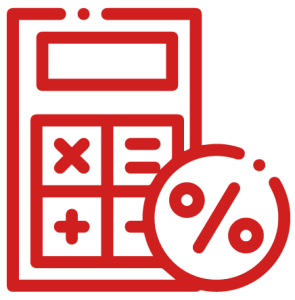
By conducting a load analysis, SR Renovations will record the wattage and average daily use of all the electrical devices that are plugged into your central power source such as refrigerators, lights, televisions, PCs, power tools, machinery, and computer equipment. Some loads, like your refrigerator or electric fencing, use electricity all the time, while others, like power tools or large format printers, use electricity intermittently, known as selectable loads.
Some providers will ask you only for an electricity bill and attempt to provide a PV solution based on this, but the approach is fundamentally flawed and inaccurate since your bill cannot reveal day and night usage, selective loads or peak demands which need to be factored into your PV solution. A thorough load analysis is a must. We’ll visit your premises, set-up loggers on your electricity distribution board for at least a week to ten days and provide you with a comprehensive view of where your electricity usage is going, and what steps we can take to help you reduce it. We will also be able to provide a very accurate indication of what your savings will be depending on what size system and the solutions we specify for you, so there is no shooting in the dark.
What are the Benefits & Costs of a PV SOLAR SYSTEM?
Benefits like Comfort, and security is just a few to mention. Costing of Solar is much more affordable than might be expected.
What is the cost to install PV?
Many people believe renewable energy is too expensive without doing their homework. The reality is that the cost of renewable energy solutions has come down significantly over the last few years. When we take them through the costs versus the savings and the fact that their savings can even finance their move to renewable energy, most are stunned at how affordable it is. In fact, on a monthly repayment option, in many cases the monthly finance payments are covered by what they would be paying on electricity costs anyway. Once paid off, you’ll be smiling even more!
If we look at a typical PV system, your initial capital layout would be in the beginning when you purchase the equipment and on average takes around 5 years to offset the costs, but then for the expected 25 years of the lifespan of your panels, you will get free electricity. The initial upfront cost is the only cost involved with solar. After that, because there are no moving parts, the maintenance on the system is very low. Once fully paid, you have an incredible investment and asset for your property that keeps saving you thousands of Rands each year, for many years to come. And you’ll have a highly efficient, green home or business which is an absolute win. Another advantage of PV is that it is entirely scalable and can be ramped up as your requirements demand and, more importantly, as your budget allows.
PV Solar benefits
Solar PV has a range of benefits. Systems focused primarily on savings (grid tied systems) immediately reduce your electricity bill pro rata to the size of the system you install. Back-up systems, which provide during power outages, provide clean, quiet, instant, and environmentally friendly electricity when your utility lets you down. Hybrid solutions provide back-up with a measure of savings. The true benefit of Grid-tie Solar PV (focused on savings) is the fact that you are protected from future Eskom price increases. Any component of your electricity requirement covered by a solar system is in effect hedged against future tariff escalations. All indications are that South African electricity users are in transition from enjoying the lowest cost of electricity in the world ten years ago to becoming one of the highest payers.

Photovoltaic Technology
Photovoltaic Technology Photovoltaics Explained
‘Photovoltaic’ is a marriage of two words: ‘photo’, meaning light, and ‘voltaic’, meaning electricity. Photovoltaic (PV) panels form part of a complete solar system to generate energy from sunlight.
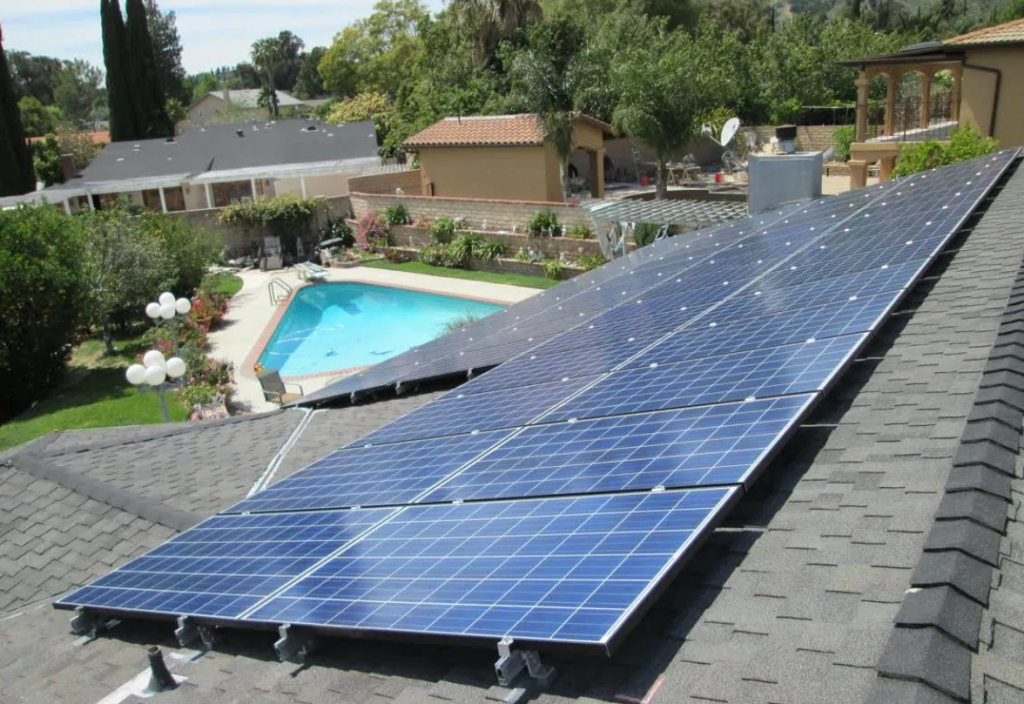
What is the cost to install PV?
Photovoltaic technology is the term used to describe the hardware converting solar energy into usable power. At the heart of this technology is a semi-conductor material which can be adapted to release electrons. The most common semi-conductor material used in photovoltaic cells is silicon — an element most found in sand. Silicon is the second most abundant material on Earth!
Solar panels are comprised of a series of cells. All these cells have two layers of semi-conductors: one positively charged, and one negatively charged. When light shines on the semi-conductor, the electric field between these two layers causes electricity to flow, generating direct current.
The greater the intensity of the light, the greater the flow of electricity. A PV system does not need bright sunlight to operate. It can also generate electricity on cloudy days. Due to the reflection of sunlight, days with slight cloud can even result in higher energy yields than days with a completely cloudless sky.


